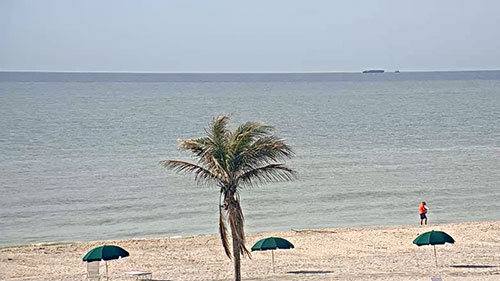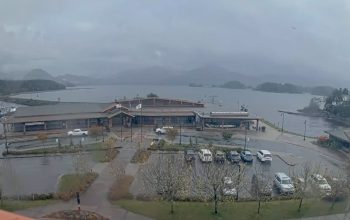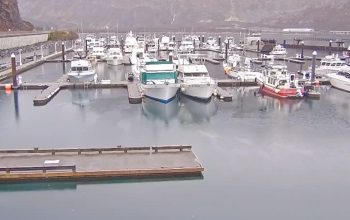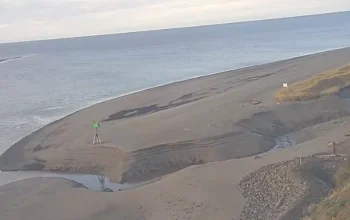Sanibel Island Live Cam: Beautiful Island on The Gulf
Sanibel Island, a world-renowned destination for its pristine beaches and legendary shelling, can now be enjoyed from anywhere with the Sanibel Island Live Cam. Located at the historic Island Inn Resort, this live feed offers incredible views of sandy shores, sparkling waters, and the vibrant island life that makes Sanibel a true paradise.
Discover the Beauty of Sanibel Island
The Sanibel Island Live Cam highlights the island’s natural charm. From the comfort of your computer or smartphone, you can watch beachgoers stroll along the shore, search for shells, or simply relax in the Florida sunshine. The camera’s strategic location at the Island Inn Resort provides a front-row seat to one of Sanibel’s most scenic spots.
Sanibel Island is famous for its unique geography, sitting at the outer point of a barrier reef. This natural setup makes the area a hotspot for shells, birds, and marine life. It’s no wonder thousands of shelling enthusiasts flock here every year!
Top Things to Do on Sanibel Island
Sanibel Island, a peaceful retreat off the coast of Southwest Florida, is a dream destination for nature lovers, beachgoers, and adventure seekers. With its pristine beaches, abundant wildlife, and charming small-town atmosphere, it offers countless activities for visitors. Whether you’re looking to relax by the water, explore nature, or dive into local culture, there’s something for everyone on Sanibel Island.
1. Collect Seashells on the Beach
Sanibel Island is world-famous for shelling. Thanks to its unique east-west orientation, the island naturally gathers an incredible variety of seashells along its shores. The “Sanibel Stoop” is a well-known term describing the posture of shell hunters as they comb the sand for treasures.
Some of the best beaches for shelling include:
- Bowman’s Beach – A secluded spot with excellent shelling opportunities.
- Blind Pass Beach – Great for shelling and fishing, though swimming isn’t recommended due to strong currents.
- Lighthouse Beach Park – Located on the island’s eastern tip, this beach features a historic lighthouse and scenic views.
Arrive early in the morning, especially after a storm, for the best shelling experience.
2. Explore J.N. “Ding” Darling National Wildlife Refuge
Nature lovers will love J.N. “Ding” Darling National Wildlife Refuge, a 6,400-acre sanctuary home to countless bird species, alligators, and other wildlife. Visitors can:
- Drive along Wildlife Drive for scenic views.
- Walk the Indigo Trail for up-close wildlife encounters.
- Kayak through the mangrove forests for a unique perspective on the island’s ecosystem.
Bring binoculars and a camera—you never know what you might spot!
3. Bike the Scenic Trails
Sanibel Island is one of Florida’s best biking destinations. With 25 miles of paved bike trails, visitors can easily explore the island’s beaches, nature preserves, and local shops. The Shared Use Path takes riders past historic sites, parks, and scenic waterfront areas. Rentals are available throughout the island.
4. Visit the Bailey-Matthews National Shell Museum
For a deeper understanding of Sanibel’s shelling culture, the Bailey-Matthews National Shell Museum is a must-visit. This unique museum showcases rare shells, marine exhibits, and even a Living Gallery of Aquariums, featuring live mollusks, octopuses, and other sea creatures.
5. Discover Local History at Sanibel Historical Museum and Village
Step back in time at the Sanibel Historical Museum and Village, where you can explore restored historic buildings from the 1800s and early 1900s. Learn about the island’s early settlers, the Calusa Native Americans, and the pioneers who shaped Sanibel into what it is today.
6. Enjoy a Kayaking or Paddleboarding Adventure
For a peaceful way to explore Sanibel’s waterways, rent a kayak or paddleboard. Tarpon Bay and the Commodore Creek Trail are excellent spots to paddle through mangrove tunnels while spotting dolphins, manatees, and non-native birds. Guided eco-tours are available for those who want expert insight into the area’s diverse marine life.
7. Go Fishing in the Gulf or Pine Island Sound
Sanibel is a top destination for fishing enthusiasts. Whether you prefer fishing from the beach, the Sanibel Pier, or a boat, there are plenty of opportunities to reel in a big catch. Common fish species include snook, redfish, and tarpon. Chartered fishing trips offer a chance to experience deep-sea fishing with experienced guides.
8. Visit BIG ARTS for Cultural Events
For those interested in arts and culture, BIG ARTS (Barrier Island Group for the Arts) hosts concerts, theater performances, art exhibits, and workshops throughout the year. Whether you’re interested in painting, photography, or live music, there’s always something creative happening at BIG ARTS.
9. Indulge in Local Dining
Sanibel’s dining scene offers a mix of casual beachfront cafes and fine dining restaurants. Some must-visit spots include:
- The Lighthouse Café – Famous for its hearty breakfast and “world’s best” pancakes.
- Bleu Rendezvous French Bistro – A cozy spot serving classic French cuisine.
- Doc Ford’s Rum Bar & Grille – A lively restaurant offering fresh seafood and tropical cocktails.
Be sure to try the island’s fresh-caught seafood, especially grouper and shrimp.
10. Take a Sunset Cruise
One of the most magical ways to experience Sanibel is by taking a sunset cruise. Several local companies offer boat tours that sail into the Gulf of Mexico, providing breathtaking views of the sunset. Dolphins often make an appearance, making the experience even more special.
11. Explore Captiva Island
A short drive or bike ride from Sanibel, Captiva Island is another charming getaway. It’s known for its quiet beaches, colorful sunsets, and fun dining spots like the quirky Bubble Room restaurant. Spend an afternoon exploring Captiva’s laid-back vibe before heading back to Sanibel.
12. Learn at the Sanibel Sea School
For an educational adventure, visit the Sanibel Sea School, which offers hands-on marine biology programs for kids and adults. Activities include guided beach walks, marine life identification, and conservation lessons about protecting ocean ecosystems.
13. Take a Dolphin-Watching Tour
Dolphins are a common sight around Sanibel, and one of the best ways to see them is on a guided dolphin tour. These boat tours take visitors through the waters of Pine Island Sound, where playful dolphins often swim alongside boats.
14. Visit the Sanibel-Captiva Conservation Foundation (SCCF)
For those interested in conservation, the Sanibel-Captiva Conservation Foundation (SCCF) offers educational programs about local ecosystems, including guided nature walks and interactive exhibits. Visitors can also explore the Native Landscapes & Garden Center to learn about Florida-friendly gardening practices.
Sanibel Island is a true paradise for nature lovers, beach enthusiasts, and adventure seekers alike. Whether you’re shelling on the beach, biking through scenic trails, or exploring the rich wildlife, there’s something for everyone to enjoy. The island’s commitment to conservation and its relaxed atmosphere make it a perfect escape from the hustle and bustle of everyday life.
A trip to Sanibel Island in 2025 promises unforgettable experiences, breathtaking scenery, and a deep connection to nature. No matter how you choose to spend your time, one thing is certain—you’ll leave with incredible memories and a longing to return.
The Rich History of Sanibel Island
Sanibel Island, a barrier island off the coast of Southwest Florida, has a deep and fascinating history. From its early indigenous inhabitants to its European exploration and modern conservation efforts, the island has evolved significantly over thousands of years.
The Calusa: Sanibel’s First Inhabitants
The first known residents of Sanibel Island were the Calusa, a powerful and resourceful indigenous people. They arrived around 2,500 years ago and quickly established dominance over Southwest Florida. Unlike many Native American groups that relied on agriculture, the Calusa built their civilization around fishing.
They constructed an elaborate system of canals, shell mounds, and artificial islands to support their growing population. Using dugout canoes, they navigated the region’s waterways with ease, engaging in trade with other groups and even distant Caribbean communities.
The Calusa were fierce warriors and resisted European colonization for over 200 years. However, their society began to decline after the arrival of Spanish explorers in the 16th century. Disease, conflict, and slave raids ultimately led to their disappearance by the late 1700s.
European Exploration and Colonization
The first Europeans to arrive in the region were Spanish explorers, with Juan Ponce de León landing on Florida’s coast in 1513. Some historians believe he may have passed near or even stopped at Sanibel Island during his voyages.
By the mid-1700s, Cuban fishermen had established seasonal fishing camps, known as ranchos, along the Gulf Coast, including on Sanibel. These camps became trading hubs, where the fishermen exchanged goods with Native Americans and other settlers.
The name “Sanibel” likely evolved from “San Nibel” or ”(Santa) Ybel”, appearing on maps as early as 1765. Some stories suggest Ponce de León named the island after Queen Isabella I of Castile, while others claim the name came from Spanish pirates who once roamed the Gulf.
Pirates and Legends of Sanibel
Sanibel is steeped in pirate folklore, most notably tied to the legendary José Gaspar (Gasparilla). According to local tales, Gaspar used Sanibel and nearby islands as hideouts for his stolen treasure. His supposed rival, Black Caesar, a former Haitian slave turned pirate, is also rumored to have lived on Sanibel before being chased away.
While these stories add to the island’s mystique, there is little historical evidence to confirm Gaspar’s existence. However, the idea of buried treasure continues to captivate the imagination of visitors and locals alike.
Early American Settlements
In 1832, the Florida Peninsular Land Company attempted to establish a settlement on Sanibel, then spelled “Sanybel”. The company envisioned a thriving farming community, but due to poor soil and harsh living conditions, the colony struggled. By 1849, most settlers had abandoned the island.
After the Homestead Act of 1862, more settlers arrived, seeking land and opportunity. Many were farmers, fishermen, and traders. The island community slowly grew, and by 1884, the Sanibel Lighthouse was completed. The lighthouse improved navigation and marked the beginning of a more permanent population on the island.
Sanibel in the 20th Century
For much of the early 1900s, Sanibel remained a quiet, isolated fishing community. The only way to reach the island was by boat, which limited growth. However, in 1928, a ferry service was introduced, making it easier for visitors to explore the island’s pristine beaches and natural beauty.
The Construction of the Causeway
A major turning point came in 1963 with the construction of the Sanibel Causeway, which connected the island to mainland Florida. The new road sparked a surge in tourism and development, changing the island’s character almost overnight. Hotels, restaurants, and businesses sprang up to accommodate the influx of visitors.
Recognizing the potential dangers of overdevelopment, residents took action. In 1974, Sanibel incorporated as a city and passed strict zoning laws to preserve the island’s natural environment. These regulations limited building heights and restricted large commercial chains, ensuring Sanibel maintained its small-town charm.
Conservation and Preservation Efforts
Sanibel is now a model for environmental conservation. Over half the island is protected land, thanks to organizations like the Sanibel-Captiva Conservation Foundation (SCCF) and the J.N. “Ding” Darling National Wildlife Refuge.
The refuge, established in 1945, is home to diverse wildlife, including alligators, manatees, and over 250 species of birds. The SCCF, founded in 1967, has played a crucial role in acquiring and preserving ecologically sensitive land.
In 2007, a new Sanibel Causeway was completed, replacing the old bridge. The remains of the original structure were sunk into the Gulf of Mexico to create artificial reefs, further demonstrating Sanibel’s commitment to sustainability.
Modern-Day Sanibel
Today, Sanibel Island is a top destination for visitors looking to experience Florida’s natural beauty and rich history. Unlike many other coastal towns, it has successfully balanced tourism and conservation.
Strict zoning laws continue to protect the island’s character, ensuring that new development does not overwhelm its fragile ecosystem. Chain restaurants remain banned (except for two grandfathered-in locations), and most businesses are locally owned, giving Sanibel a unique and welcoming atmosphere.
Visitors can explore the island’s historic lighthouse, scenic biking trails, and abundant wildlife refuges. Shelling, kayaking, and fishing remain popular activities, just as they were for the island’s early settlers.
Sanibel Island’s history is one of resilience, transformation, and preservation. From its early days as a Calusa stronghold to its time as a pirate hideout and fishing village, the island has seen centuries of change.
Despite modern developments, Sanibel has remained committed to protecting its natural beauty and historical heritage. Whether you’re visiting for its stunning beaches, fascinating history, or abundant wildlife, Sanibel Island continues to be one of Florida’s most treasured destinations.
The Geography and Climate
Sanibel Island, located off the coast of Southwest Florida, is a stunning barrier island known for its unique geography and tropical climate. With pristine beaches, lush mangroves, and diverse wildlife, Sanibel offers both natural beauty and ecological importance. The island’s climate, shaped by its position along the Gulf of Mexico, plays a crucial role in its environment and way of life.
Geography of Sanibel Island
Sanibel Island sits at 26°26′23″N 82°4′50″W, just west of Fort Myers. It is roughly 12 miles (19 km) long and 3 miles (5 km) wide at its widest point. According to the United States Census Bureau, Sanibel has a total area of 33.16 square miles (85.9 km²). About 17.21 square miles (44.6 km²) is land, while the remaining 15.96 square miles (41.3 km²) is water.
Barrier Island Formation
Sanibel, along with nearby Captiva Island, formed about 6,000 years ago due to shifting sands and ocean currents. Unlike most barrier islands that run parallel to the coast, Sanibel has a unique east-west orientation. This shape allows the island to capture a vast number of seashells, making it one of the best shelling destinations in the world.
Natural Features
Sanibel’s geography is dominated by:
- Beaches – Miles of sandy shores rich with shells.
- Mangroves and Wetlands – These provide important habitats for wildlife.
- Freshwater Lakes and Ponds – Essential for birds and other species.
- Pine Flatwoods and Hardwood Hammocks – Supporting diverse plant life.
Nearly half the island is protected land, with the J.N. “Ding” Darling National Wildlife Refuge being a major conservation area.
Climate of Sanibel Island
Sanibel Island has a tropical climate, characterized by warm winters, hot summers, and seasonal rainfall. Its location along the Gulf influences its weather, keeping winters mild and summers humid.
Seasonal Temperatures
- Winter (December – February) – Daytime highs average 75°F (24°C), with cooler nights around 55°F (13°C).
- Spring (March – May) – Temperatures gradually rise, reaching highs of 80-85°F (27-29°C).
- Summer (June – September) – The hottest months, with highs around 90°F (32°C) and humidity making it feel even warmer.
- Fall (October – November) – Slightly cooler, with highs around 80-85°F (27-29°C).
Rainfall and Humidity
Sanibel experiences a wet season (June-September) and a dry season (October-May). The island gets about 54 inches (137 cm) of rain per year, with most of it falling in summer thunderstorms. These storms, fueled by heat and moisture, often bring heavy rain and lightning in the afternoons.
June is the rainiest month, while the driest months are December through April.
Sea Breezes and Hurricanes
Sanibel’s climate is moderated by sea breezes from the Gulf, which help cool summer temperatures. However, the island is prone to hurricanes and tropical storms, especially from June to November.
Hurricanes and Their Impact on Sanibel
Sanibel has faced several major hurricanes throughout its history. While direct hits are rare, storms in the Gulf of Mexico can still cause storm surges, flooding, and damage.
Hurricane Charley (2004)
On August 13, 2004, Hurricane Charley, a Category 4 storm with 143 mph (230 km/h) winds, struck Sanibel. It was one of the strongest hurricanes to hit Southwest Florida since Hurricane Donna in 1960.
- Destruction of non-native Australian Pines blocked roads.
- Bird and sea turtle nests were wiped out.
- The Sanibel Lighthouse survived with minimal damage.
- The Sanibel Causeway remained intact, though some structures were damaged.
Residents were not allowed to return until August 18, due to fallen trees, downed power lines, and lack of clean water.
Hurricane Ian (2022)
On September 28, 2022, Hurricane Ian made landfall just north of Sanibel as a Category 4 hurricane. The storm brought catastrophic storm surges and winds, causing widespread destruction.
- The Sanibel Causeway partially collapsed, cutting off road access.
- Homes, businesses, and natural areas were heavily damaged.
- The island’s power and water systems failed.
Recovery efforts took months, and the causeway had to be rebuilt before residents and tourists could return.
How Sanibel Adapts to Its Climate
Despite the risks of hurricanes, Sanibel’s community has adapted to its environment through strong building codes, conservation efforts, and disaster preparedness.
Conservation and Development Restrictions
To protect its natural beauty, Sanibel has strict zoning laws that limit development. Buildings cannot exceed two stories, and large commercial chains are mostly banned. This prevents overcrowding and helps maintain wetlands and wildlife habitats.
Hurricane-Resistant Infrastructure
Sanibel has:
- Stronger building codes to withstand storms.
- Elevated homes to prevent flooding.
- Emergency plans for evacuations and rebuilding efforts.
Protecting Wildlife and Ecosystems
The Sanibel-Captiva Conservation Foundation (SCCF) and J.N. “Ding” Darling Refuge play key roles in preserving wetlands, preventing erosion, and restoring habitats after storms.
Sanibel Island’s geography and climate shape its identity as a unique and resilient coastal community. Its barrier island formation, tropical weather, and vulnerability to hurricanes influence how people live, build, and protect the land.
Despite occasional storms, Sanibel remains a beautiful and cherished destination. Thanks to strong conservation efforts, it continues to be a paradise for wildlife lovers, beachgoers, and nature enthusiasts alike.
The Sanibel-Captiva Conservation Foundation (SCCF)
The Sanibel-Captiva Conservation Foundation (SCCF) is a leading environmental organization dedicated to preserving and protecting the natural resources of Sanibel and Captiva Islands. Since its founding in 1967, SCCF has played a crucial role in land conservation, marine research, and wildlife protection. Through education, advocacy, and hands-on conservation efforts, the foundation continues to ensure that Sanibel Island remains a haven for wildlife and a model for ecological sustainability.
SCCF’s Mission and Land Conservation Efforts
SCCF was established with a clear mission: to protect and restore the ecosystems of Sanibel and Captiva Islands and the surrounding waters. Over the decades, SCCF has expanded its efforts to include land preservation, habitat restoration, environmental education, and scientific research.
One of SCCF’s most significant achievements is its land conservation program. The foundation is the largest private landowner on Sanibel Island, overseeing more than 1,800 acres of protected land. In addition, SCCF manages over 300 acres of conservation land in nearby areas, including Pine Island Sound, Fort Myers, and Cape Coral.
Protected Natural Areas
SCCF maintains several nature preserves and wildlife corridors, ensuring that native habitats remain undisturbed. Some of these areas are open to the public, offering eight miles of hiking trails where visitors can explore wetlands, hardwood hammocks, and mangrove forests. Other areas remain restricted to protect sensitive wildlife populations.
These conservation efforts help maintain the island’s ecological balance, preventing habitat destruction caused by urban development. By preserving land, SCCF also safeguards Sanibel’s unique freshwater system, which is essential for the survival of both plant and animal species.
Marine Conservation and Water Quality Monitoring
SCCF is deeply involved in marine conservation, focusing on the health of the Gulf of Mexico and local estuaries. The organization’s Marine Laboratory conducts critical research on topics such as:
- Seagrass ecosystems
- Mangrove restoration
- Shellfish population health
- Harmful algal blooms
The River, Estuary, and Coastal Observing Network (RECON)
One of SCCF’s most important projects is RECON (River, Estuary, and Coastal Observing Network). This network of in-water sensors provides real-time data on key water quality indicators, including salinity, temperature, nutrient levels, and algae concentrations.
Monitoring water conditions helps scientists and policymakers make informed decisions about marine health and conservation strategies. This is particularly important in Southwest Florida, where red tide outbreaks and pollution from urban runoff threaten coastal ecosystems.
SCCF works closely with local, state, and federal agencies to advocate for cleaner water policies, helping to reduce pollution in the Caloosahatchee River and surrounding estuaries.
Wildlife Protection and Monitoring
Sanibel and Captiva Islands are home to a wide range of native and migratory wildlife species. SCCF operates several conservation programs aimed at protecting endangered animals and preserving their habitats.
Sea Turtle Conservation Program
SCCF plays a major role in protecting sea turtles on Sanibel and Captiva Islands. Sea turtle monitoring on the islands began in the 1950s and was transferred to SCCF in 1992.
The foundation’s turtle patrol teams monitor nesting sites and hatchling success rates each year. Most of the turtles that nest on the islands are:
- Loggerhead sea turtles (Caretta caretta) – The most common nesting species.
- Green sea turtles (Chelonia mydas) – Less common but increasing in numbers.
- Leatherback sea turtles (Dermochelys coriacea) – Rare, but occasionally seen.
- Kemp’s ridley sea turtles (Lepidochelys kempii) – The rarest species found on Sanibel.
SCCF’s nest protection efforts involve:
- Documenting nest locations
- Marking and protecting nests from predators
- Ensuring artificial lights do not interfere with hatchlings
- Educating the public about turtle-friendly practices
Each year, around 600 loggerhead nests are recorded on the islands, producing thousands of hatchlings.
Shorebird Monitoring and Protection
SCCF also works to protect shorebirds, including:
- Snowy plovers (Charadrius nivosus)
- Least terns (Sternula antillarum)
- Black skimmers (Rynchops niger)
These species rely on Sanibel’s beaches for breeding and nesting. However, they are vulnerable to disturbance from human activity, habitat loss, and predation. SCCF conducts nesting surveys, marks sensitive areas, and educates visitors on how to minimize their impact on these birds.
Eastern Indigo Snake and Other Threatened Species
SCCF is also involved in the conservation of the Eastern indigo snake (Drymarchon couperi), a federally threatened species. The organization works to preserve its habitat and track populations.
Other important species monitored by SCCF include:
- Gopher tortoises
- Marsh rabbits
- Raptors and wading birds
By protecting these species, SCCF helps maintain the biodiversity of Sanibel Island.
The Native Landscapes & Garden Center
SCCF operates the Native Landscapes & Garden Center, which promotes the use of native plants in landscaping. The center sells native trees, shrubs, and flowers that require less water, fewer pesticides, and provide food and shelter for wildlife.
The garden center also offers educational programs on topics like:
- Sustainable gardening
- Invasive plant removal
- Wildlife-friendly landscaping
By encouraging residents to plant native species, SCCF supports pollinators, birds, and other wildlife, while reducing the negative impact of invasive plants.
Environmental Education and Public Outreach
SCCF believes that education is key to conservation. The organization runs a variety of programs to teach the public about Sanibel’s unique ecosystems.
School Programs and Guided Tours
SCCF provides interactive learning experiences for students and visitors. Programs include:
- Field trips to SCCF preserves
- Wildlife tracking workshops
- Sea turtle nest excavation demonstrations
SCCF also offers guided nature walks and kayak tours to help people connect with the environment.
Community Advocacy and Policy Work
Beyond education, SCCF is actively involved in policy advocacy. The foundation works with government agencies to:
- Improve water quality laws
- Strengthen wildlife protection regulations
- Oppose harmful development projects
Through public engagement and scientific research, SCCF ensures that Sanibel’s natural environment remains protected for future generations.
Conclusion: SCCF’s Lasting Impact on Sanibel’s Ecology
For over 50 years, the Sanibel-Captiva Conservation Foundation has been a driving force in preserving the natural beauty and ecological integrity of Sanibel Island.
Through land conservation, marine research, wildlife protection, and public education, SCCF has helped maintain a delicate balance between human activity and nature. Its efforts have protected endangered species, improved water quality, and preserved critical habitats.
As development pressures and climate challenges continue to grow, SCCF remains committed to its mission—ensuring that Sanibel and Captiva Islands remain a sanctuary for wildlife and a model for conservation.
For visitors and residents alike, supporting SCCF’s work means protecting one of Florida’s most treasured natural landscapes for generations to come.



